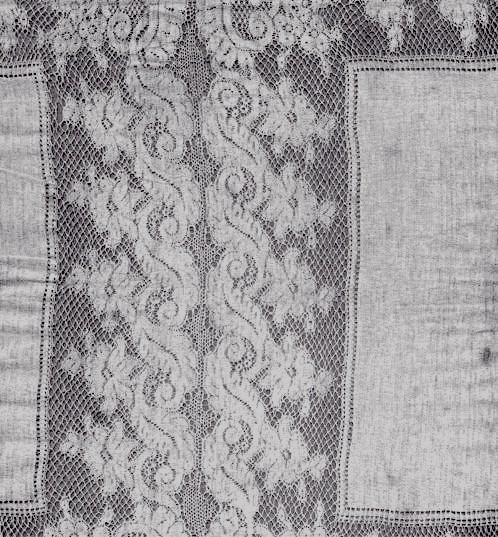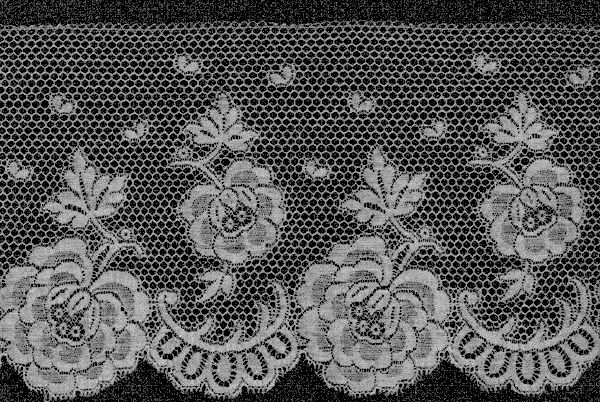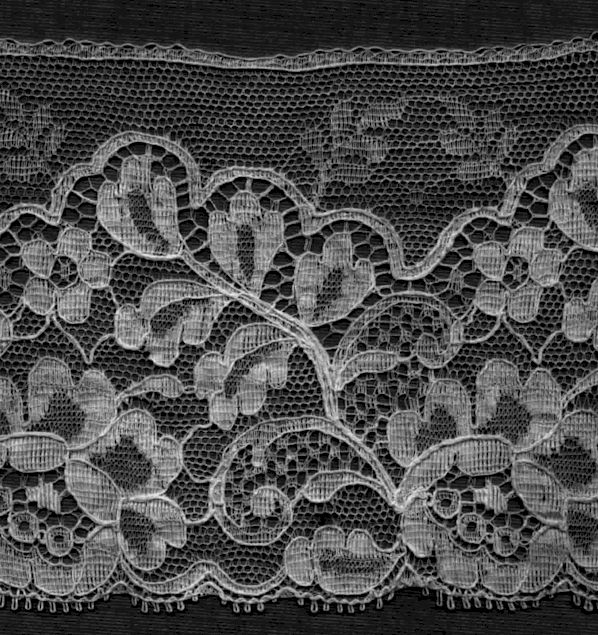|
|
| Home Topics Memorials Miscellany Transcripts References Family History Glossary Latest Beeston Blog About us | Site Search |
Text & Photographs |
"
Some Pollard Lace -
 Part of a page from a pattern book An example to explain the annotations in the pattern book - the top example
|
|

The earliest lace sample we have from the factory is the above, for silk handkerchiefs, presumably designed by Edwin Turton and dated by Arthur Pollard at "about 1886". It was the first complete handkerchief made on a Reader machine. So many Jacquard cards were needed to create the pattern that the floor beneath the Jacquard machine had to be cut away, to allow the cards to drop through to the floor below1.

Centre gimp lace set-out with flossing liners made on a Leavers landing bar machine2

Typical 1880s style lace - made on a Leavers landing bar machine


Both samples: 1880/1890s style, made on Leavers landing bar machines, draughted so that clipping (of loose thread) was not required.
The bottom lace is "Our Celebrated Rose Pattern" shown on the machine on the Machines page.

1940s/1950s style centre gimp lace, made on a Leavers landing bar machine
or - Click here to go back to the top